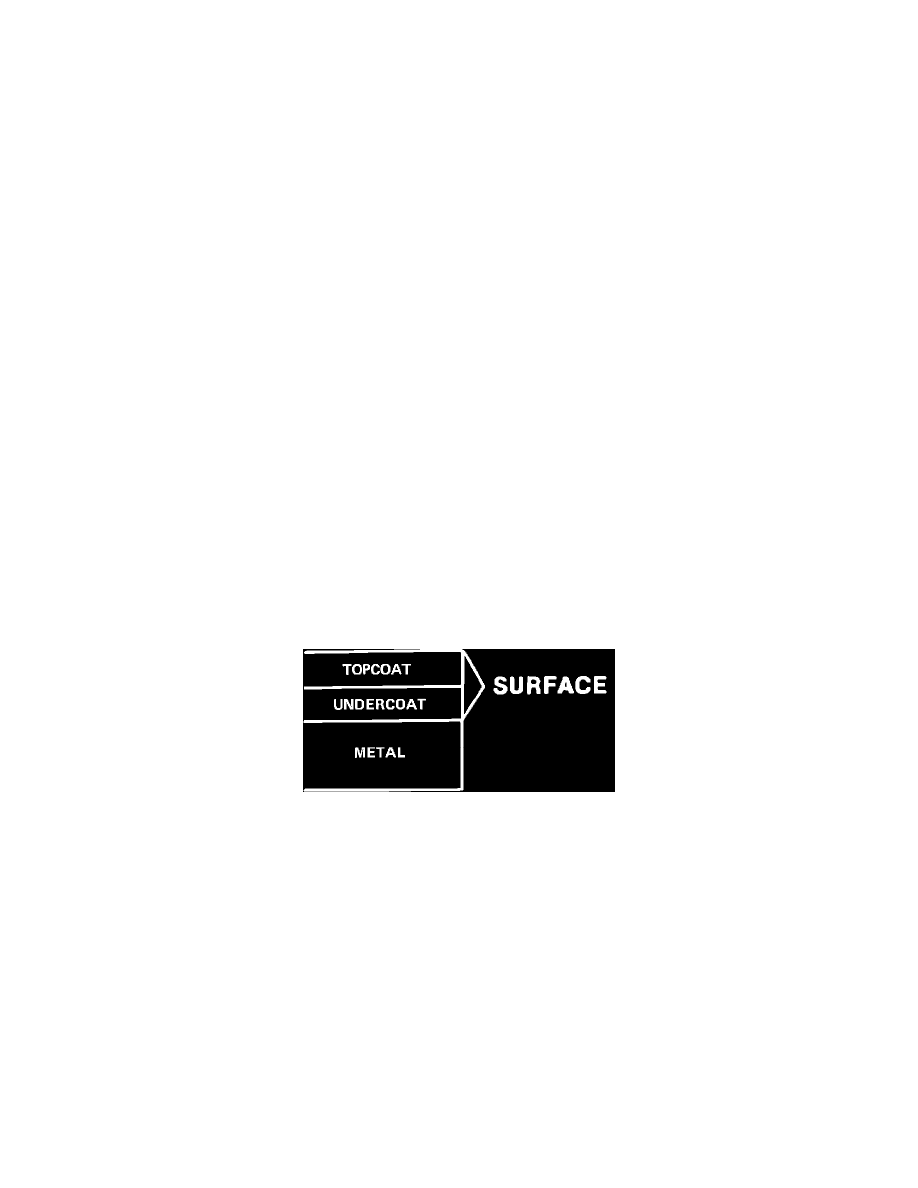Parisienne V8-305 5.0L (1985)

1.
Use a No. 24 grit sanding disc to grind off finish to bare metal. (Enamel does not clog the grinding disc like lacquer does).
2.
Finish up with a No. 50 grit disc to remove coarse sand scratches.
II. Chemical Method
The following are directions for use of Ditzler's DX-587 fast acting paint stripper. It will remove alkyd, epoxy, acrylic, acrylic urethane and urethane
finishes as well as ELPO primer down to bare metal. Similar products are available from other manufacturers.
1.
Wear rubber gloves and protective glasses and use in a well ventilated area. The use of a charcoal filter mask is recommended.
2.
Double mask all areas to be protected. Do NOT use paint stripper on fiberglass panels, flexible urethane parts, plastic parts or moldings.
3.
Stir or agitate before using.
4.
Apply the stripper with a paint brush or low pressure spray unit. Once the stripper is on the finish, do not agitate it, as this will allow the solvents
to escape from the stripper.
5.
Let the stripper stand for 15 minutes to 1 hour, or until the paint softens and lifts.
6.
Remove old finish with a nylon squeegee or hose off with a high pressure hose.
7.
Blow the surface dry and wipe with a rag soaked in silicone and wax remover. (Paint stripper contains wax to hold it against metal panel and seal
solvents in).
Mechanical vs. Chemical Stripping
Mechanical stripping is fastest for a small area such as part of a door or fender. Mechanical stripping is also good in an area where the chemical stripper
may damage the part or a part nearby.
Chemical stripping is quick and easy for a vehicle requiring complete stripping, although areas that need protecting must be double masked first.
Chemical stripping is also very good when stripping a complete panel such as a hood or door that can be removed from the vehicle.
Finish Analysis and Correction For the New Car Prep Technician
FIGURE 1 - THE SURFACE
When we refer to the "surface", we're talking about the entire finish
-
topcoats and undercoats - everything short of the bare body metal (Figure 1).
The immediate problem involved with breaking through the surface is that when the surface is broken (by sanding or by some other means) the bare
metal is exposed to air and moisture - and the possibility of future corrosion.
A second reason to avoid breaking through the surface is that there is always the possibility of a color mismatch in areas that are repainted.
Factory Painting Materials and Methods
There are two assembly line painting methods used, each with its own set of properties. One method uses thermo-flow acrylic lacquer finishes, while the
other uses thermo-set enamel finishes.
